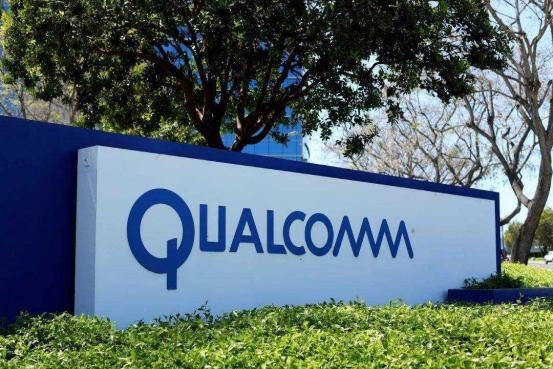The battle between Apple and Qualcomm will impact the wireless industry
Date: 2019 / 11 / 30 Source: International electronics market Browse: 768
As the U.S. Federal Trade Commission (FTC) investigates and multiple lawsuits in China, Germany, and the U.S. will make rulings in the coming months, patents between Apple and Qualcomm The war is continuing to heat up.
However, from various speeches and news reports, it is easy to forget the real problem and the stakes. In fact, the dispute between the two parties has focused on the intellectual property rights (IP) licensing model and the licensing rate related to the wireless industry. And its impact lies in the proportion of investment and innovation.
This is not just a battle between Apple and Qualcomm, but the entire wireless industry. As a leading innovator and IP licensor, Qualcomm is neither the first nor the last company to be Apple's target.
Patent stands for IP. In many cases, IP is reserved exclusively as a competitive hurdle and will not be easily licensed to other companies. If a company violates IP, the holder can seek compensation or take other actions through legal means.
In some cases, IP holders are willing to provide their IP to anyone for free. This is usually done to establish open-source hardware or software standards. In other cases, IP holders choose to authorize IP to specific parts of the value chain or may be all parts of the value chain.
From the perspective of the semiconductor industry, IP is usually authorized by the IP holder to the semiconductor supplier. However, in the wireless industry, IP is licensed to ODMs or OEMs-mainly terminal device manufacturers, including smartphones and automobiles.
This licensing model was pioneered by early wireless vendors such as Ericsson, Motorola, and Nokia. However, over the years, the wireless industry has changed from the early days, and the licensing model has achieved unprecedented levels of innovation.
Typical smartphones may use up to millions of patents, ranging from wireless network technology for communication to user interfaces and applications (Apps) implemented on the phone. More importantly, it allows anyone and everyone to innovate on the most popular computing and communication platforms in the world today. For the semiconductor industry, it allows any semiconductor company to enter the market without having to worry about retaliation from IP holders and / or competing semiconductor companies.
In the early stage of the development of smart phones, Texas Instruments (TI) was one of the leaders in the field of mobile SoCs at the time, and at the same time there were more than a dozen semiconductor companies actively entering this market. Over time, many companies such as Intel, Freescale, Nvidia, and TI have withdrawn from the market, while other players, such as MediaTek and several Chinese startups, have begun to enter the market. . In addition, three global smartphone shipment leaders, including Apple, Huawei and Samsung, have also begun to design their own SoCs.
In the same period, the performance of mobile SoCs has improved to close to that of PC processors, wireless interfaces have reached or exceeded wired interfaces, and due to the integration of new technologies and applications, smartphones have become the camera and video provider for more than half of the world ’s population. , Play games, watch movies, newsletters, and social networking applications. The number of smartphones currently in use exceeds the global population. It's all a direct result of this unique licensing model.
Affect innovation and R & D?
Apple has benefited a lot from this model. Although Apple can be said to be a technology innovator, especially in terms of device and platform design; however, Apple is a latecomer to the smart phone market and does not have its own wireless technology. Therefore, like many technology companies, Apple wants to master all the technologies used-this is what we often call the "non-invented" (NIH) syndrome. Over time, Apple has developed or actively acquired many IP and technologies, but it is still not a significant contributor to the core wireless technology of the wireless industry.
The core technology licensed to device manufacturers is often referred to as the Standard Essential Patent (SEP), but there are millions of other non-essential patents that also contribute to the specifications and functionality of smartphones. SEP IP holders agree to license the technology on fair, reasonable and non-discriminatory (FRAND) terms. At a minimum, device manufacturers must obtain SEP authorization, and may need to obtain other non-essential patent authorizations from IP holders.
Apple's problem is that the company pays licensing fees through its IP partners, especially SEP. According to Tirias Research estimates, Apple paid less than $ 20 for hundreds of patents per iPhone to all IP holders. This means that the iPhone X accounts for less than 2% of the company's billion-dollar R & D investment. In addition, these proportions will decrease over time, even as the overall patent pool increases.
However, for every US $ 1 reduction in the cost of IP, Apple can bring in more than US $ 200 million in annual profits. Apple has also filed a complaint with global regulators to seek to change the licensing model, requiring semiconductor IP licensing to be pushed to chip suppliers, not OEMs. (It's worth noting that Apple is not the only OEM seeking this change.) This may force all IP holders to license directly to specific parts of the smartphone value chain, rather than focusing solely on the end device. In short, the significant reduction in licensing fees and changes in licensing models could have a huge impact on the wireless market.
Apple iPhone XS
The authorization rate is set mainly by the market after a long period of time, and changes over time due to the market. Lowering patent rates for Apple and other industries by trying to promote regulators or markets could have a significant impact on future R & D investments.
However, changes in licensing models may have a greater impact. If every IP holder seeks authorization / royalty from every part of the value chain, the average cost of a smartphone will be many times higher than it is now, and it may hinder new ones at all levels of the value chain. Suppliers enter the market. Overall, this will reduce innovation and may hurt consumers due to device pricing and the cost of acquiring new technologies.
In the past few weeks, U.S. District Court Judge Lucy Koh has issued a preliminary ruling that Qualcomm must authorize other chip vendors, although other government agencies around the world support the licensing model and licensing fees. This may eventually be overturned through an agreement or appeal with the FTC.
In response to this regulatory attack, Qualcomm has applied for patent infringement and won the ruling in ITC and Chinese courts in the United States, thus prohibiting the import of most of the existing iPhone models into China. But these decisions may also be overturned on appeal.
However, these rulings and their potential financial impact on the two companies have now reached their peak, and it is likely that they will lead to a settlement of these disputes in the coming months. It is too early to say the final result, but the fate of the wireless industry still seems to be in crisis ...









